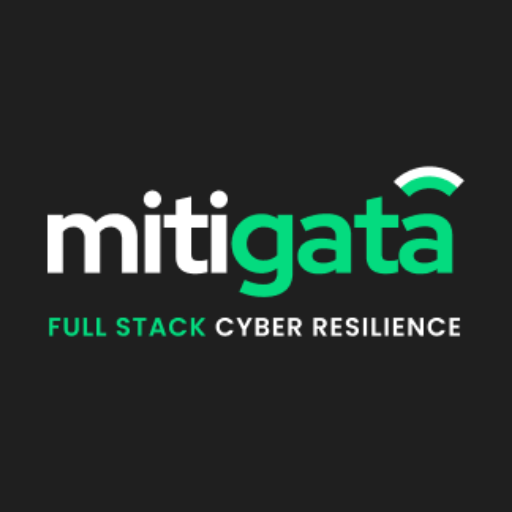The 2024 Global breach data shows organisations now take an average of 194 days to detect a cyber intrusion, and another 64 days to contain it, for a total lifecycle of 292 days.
Meanwhile, cyberattacks are happening faster than ever. One study estimates a new attack every 39 seconds.
At times like these, Organisations need quick and timely incident response tools and services to assist in identifying, containing, and recovering from a cyber-incident, thereby minimising damage and maintaining business continuity.
How Mitigata Transforms Your Cyber Incident Response Capability
Effective cyber incident management goes beyond installing tools. It requires deep expertise, dedicated resources, and flawless execution under pressure. This is where Mitigata stands apart.
We’re India’s most trusted cyber resilience partner, serving 800+ businesses nationwide.
Unlike typical vendors who provide tools and disappear, we own the entire incident response journey – from 24/7 monitoring and threat detection to containment, recovery, and post-incident analysis.
Cyber Insurance Policy Starting at Just ₹95,000/ Year*
With Mitigata, you get the best market pricing and fast claims—plus proactive defence through our free cyber risk console.

Here’s what sets us apart:
Single-point accountability – We handle detection, response, recovery, and reporting. One dedicated contact ensures faster resolution and complete transparency during critical incidents.
Rapid threat mitigation – Our 24/7 SOC and experienced incident responders identify threats early and act immediately, reducing impact and minimising downtime.
Cost-efficient delivery – Enterprise-grade tools and optimised workflows deliver comprehensive incident management at 30% lower investment than competitors.
Full-spectrum capabilities – With 500+ security products and dedicated VAPT/SOC teams in-house, we manage everything from detection to forensics without external dependencies.
Demonstrated success – Our portfolio of 800+ satisfied clients across 25+ industries, including leading enterprises, proves our incident response expertise delivers results.
In 2024, 75% of organisations have experienced a SaaS security incident. Read this expertly created guide highlighting the importance of cyber insurance for SAAS companies.
Benefits of Having Incident Response Management Tools
The use of effective incident response tools and services not only adds security, but it also improves the operation, helps protect data and makes sure teams are ready when a cyber event occurs.
There are numerous benefits of boosting proper incident response management workflows, which include:
Quicker Response To Threats: Automated incident response management tools will monitor your systems in real-time, alerting team members to suspicious activity at the moment.
The quicker you can detect these attacks, the lower the impact will be on business operations from a cyber-attack.
Business Risk Reduction: Establishing a sound security incident management system minimises the chance of data breaches, financial loss, and reputational loss to the business.
With defined workflows and people knowing what they need to do in the event of a breach, the organisation can respond to incidents or events that occur with confidence, no fuss, while a critical event is unfolding.
Want to know the secret behind faster SEBI CSCRF certification? Explore Mitigata’s practical guide packed with proven tips and insights.
Regulatory Compliance: An incident handling tool or service will create logs, report specifics, and ensure documentation for audits is ready. This serves to satisfy industry standards, legislative requirements, and helps you showcase your accountability.
Preparedness: Competent incident responders with incident response management software will act immediately in the event of an attack, utilising an executed security incident process. This reduces confusion and makes sure everyone is coordinated.
Recovery: Organisations can rely on established systems and processes to recover from a cyber event. In addition, it can restore operations and everyday tasks, and replicate the environment, eliminating downtime and the chance of future breaches from a similar occurrence.
Proactive Defence Begins With Mitigata’s Managed SOC Expertise
Our SOC combines automation, human expertise, and rapid response to contain attacks and strengthen your cyber resilience.

Best Incident Management Tools List for Businesses
Organisations adopt various technology applications to help improve efficiency, accuracy, and speed in incident handling and response. Here are a few tools you need to know
Detection and Monitoring Tools: These tools monitor networks and systems continuously to detect suspicious activity in real-time. They alert teams immediately, reduce the chance of spreading breaches, and support a faster incident response plan. Common examples include SIEM platforms, EDR solutions, and network detection tools.
IT Incident Management Software: This software helps track incidents from detection to resolution. Teams can assign action items, keep detailed notes, and ensure that every detail of the security incident process is documented and actionable.
Are you counted among those 60% of GRC users who manage compliance manually? It’s high time to check these popular automated GRC tools in India
Security Incident Management Systems: This combination of tools will allow for the centralised analysis of potential threats, easy reporting and mitigation of incidents.
They also allow organisations to manage multiple incident categories simultaneously and make it easier to keep all stakeholders informed.
Security Automation and Orchestration Tools (SOAR): Automation tools reduce manual effort by streamlining repetitive tasks like alert triage, ticket creation, and response playbook execution. They are especially valuable for teams managing high volumes of alerts or complex incident workflows, helping speed up response times while reducing human error.
Reporting Tools: Reporting tools produce documentation, logs, and reports that are usable for compliance. They help with audit preparation, compliance, and reporting on insights for future cybersecurity incident response-based plans.
How to Choose the Right Incident Response Provider
It is not enough to have tools; one must have the right tools integrated correctly and utilised by experts. This is where selecting the right incident response services provider becomes essential to your organisation’s security posture.
Continuous Threat Visibility – A good provider has 24/7 monitoring processes in place to detect threats in real-time, ensuring you never miss or delay threat detection.
Advanced Security Operations Centres (SOCs) prevent threats from escalating into full-blown breaches during suspicious activity, safeguarding your data and responding to timelines for mitigation and reporting.
Automated Response Workflows A professional provider removes the manual bottleneck by automating as much as possible. Automated incident response tools, for example, are capable of handling redundancy in tasks to provide automation of immediate alerts and to implement pre-determined containment steps that reduce response time and human error.
Detect Every Threat With Mitigata’s Advanced SIEM Services
From real-time analytics to actionable insights, our SIEM ensures nothing slips through your defence layers ever again.

Seamless System Integration – A skilled service provider is familiar with complicated IT environments.
They will recognise incident management tools to ensure they can be used with your existing infrastructure and create visibility across enterprise systems, acceptable in preventing delays in mitigation and reporting.
Access to Expert Talent – The right partner chooses cyber incident responders who are specifically trained to take immediate action on your behalf if an attack occurs.
You gain access to specialised talent immediately without the burden of building your own security operations team, allowing you to protect your privileged systems.
Coordinated Response Management – Professional service providers build in time to guide the organisation’s actions during incident management and use their trained professionals in security operations centres to track the entire response process and provide real-time reporting.
A partner in incident management allows you to achieve timely and accurate coordination and to confirm security resources are equipped to address challenges.
Conclusion
With cyber threats growing rapidly, your response needs to be faster. Effective incident management requires specialised tools, a trained team, and proven plans working together.
Mitigata delivers comprehensive incident management services, including 24/7 monitoring, expert responders, and advanced detection tools.
We help organisations detect threats early, contain them quickly, and recover with minimal disruption, trusted by 800+ businesses across India.
Don’t build incident response from scratch. Partner with Mitigata and build cyber resilience.

